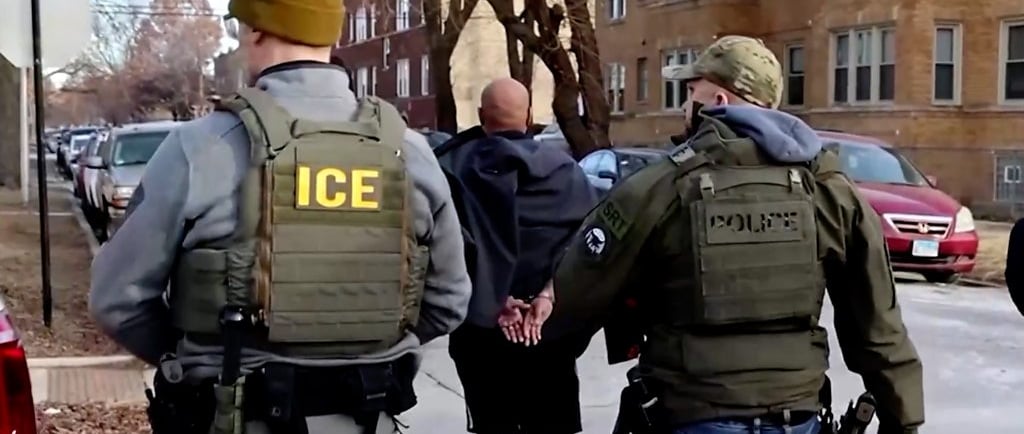United States: Trump’s Immigration Crackdown and its Economic Consequences
Donald Trump has prioritised immigration enforcement as a central pillar of his administration’s agenda. As his policies take effect, how will the economic consequences of such aggressive measures play out?
UNITED STATES
Roman Frantsyian
3/3/20254 min read


From his first day in office, Trump significantly expanded the role of Immigration and Customs Enforcement (ICE), increasing the frequency and intensity of raids targeting undocumented immigrants. Although such operations were conducted under previous administrations, they have now become more widespread and uncompromising. ICE has been granted the authority to conduct operations in locations that were previously considered off-limits, including schools, hospitals, and churches. To maximise the political impact of these efforts, conservative media outlets often accompany ICE officers during raids, and the resulting footage is regularly disseminated through platforms such as Fox News and X. One such raid even featured the television personality Dr Phil.
Trump has also increased military involvement in border security. While previous administrations, including that of Joe Biden, deployed military personnel to the southern border, Trump has done so on a significantly larger scale, both in terms of troop numbers and media exposure. The use of helicopters for aerial patrols has expanded, providing additional support to Border Patrol agents seeking to prevent unauthorised crossings. However, the majority of undocumented immigrants do not enter the country through clandestine means. Instead, they arrive legally at official checkpoints and request asylum, citing threats of political persecution or criminal violence in their home countries. Under Biden, the CBP One application was introduced to facilitate the scheduling of appointments for asylum seekers. Trump immediately discontinued this system, effectively closing this pathway into the United States.
Another significant source of undocumented immigration is visa overstays. In theory, individuals who remain in the country beyond the legal duration of their visas are the primary targets of ICE’s increased enforcement efforts. Meanwhile, the Trump administration has begun to explore more extreme restrictions, including measures that would significantly reduce legal immigration. One of the principal obstacles to such policies is the United States Constitution, which guarantees birthright citizenship under the Fourteenth Amendment. This provision ensures that any individual born on American soil is automatically granted citizenship, regardless of the immigration status of their parents. Trump signed an executive order seeking to revoke or limit this right. However, this effort was swiftly blocked by a federal judge, who characterised it as "blatantly unconstitutional." Given that similar legal challenges have consistently resulted in the reaffirmation of birthright citizenship, it is highly unlikely that Trump’s policy will withstand judicial scrutiny.
Tensions have also arisen between the Trump administration and foreign governments as a result of these policies. The administration has begun deporting undocumented immigrants in handcuffs on military aircraft, marking a departure from previous procedures, which relied on commercial flights and did not involve restraints. When the Colombian government objected, Trump responded by threatening to impose a twenty-five per cent tariff on all Colombian imports, a measure that would have had significant economic repercussions, particularly for coffee prices in the United States. In response, Colombian President Gustavo Petro threatened to impose a fifty per cent tariff on American goods. The dispute was resolved when the Colombian government arranged its own repatriation flights, allowing both leaders to claim a political victory.
Although these measures may serve Trump’s political objectives, their economic consequences are becoming increasingly evident. The agricultural sector is particularly affected, as it is heavily reliant on immigrant labour. Many workers are now avoiding regions where ICE raids are frequent, leading to labour shortages and unharvested crops. A California farmer, who chose to remain anonymous, reported a thirty per cent reduction in his workforce, stating that "Americans do not want these jobs. Never have."
The construction industry is similarly affected, with major projects across the country experiencing delays due to workforce shortages. This has contributed to rising housing costs, an outcome that disproportionately affects the middle class, a key demographic of Trump’s political base. The hospitality sector has also been severely impacted. Restaurants, hotels, and food processing facilities in cities such as Miami and New York are struggling to maintain operations, with some reducing their hours or closing altogether due to a lack of available workers. Rising labour costs are further exacerbating inflation, contradicting Trump’s promises to stabilise prices.
The technology sector, which has traditionally been less affected by immigration policy, is also experiencing difficulties. The administration has significantly reduced approvals for H-1B visas, which provide a legal pathway for skilled foreign workers to enter the United States. One Silicon Valley executive commented that "we are in a global competition for talent, and we are deliberately putting ourselves at a disadvantage." Some technology firms are now relocating their research and development operations to Canada, where immigration policies are more accommodating.
The healthcare sector is similarly affected. Rural hospitals, which rely on foreign medical professionals, are struggling to maintain adequate staffing levels, leading to the closure of some units. Nursing homes, already facing labour shortages, are finding it increasingly difficult to meet required staff-to-patient ratios.
Higher education institutions are also reporting declines in international student applications. Foreign students typically pay full tuition, and their enrolment is a crucial source of revenue for many universities. A university administrator explained that "without international students, we will have to raise fees for American students or reduce academic programmes."
Economists are now revising their forecasts for economic growth in light of these developments. The Congressional Budget Office has projected that reduced immigration could shrink the labour force by several million workers over the next decade, potentially lowering GDP growth by between 0.5 and 1.0 per cent annually. This decline is equivalent to a moderate recession occurring every few years. The states experiencing the most significant economic effects are those along the southern border, including Texas, Arizona, and California. Paradoxically, these states have been among the most vocal supporters of stricter immigration policies. The economic impact is also affecting local businesses that serve immigrant communities, and some municipalities are beginning to reconsider the financial costs of their stance on immigration enforcement.
Trump’s supporters argue that these disruptions are a necessary short-term sacrifice that will ultimately lead to higher wages and greater job opportunities for American workers. However, critics contend that such expectations are unrealistic, citing Japan as an example of a country whose restrictive immigration policies have contributed to economic stagnation in the face of an ageing workforce. As legal challenges to these policies continue to unfold, the broader implications for the United States economy remain uncertain.


